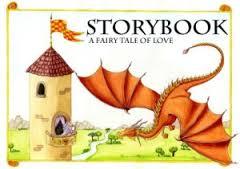Showa Epic of Japan Concludes the Story of a Man and His Nation

The word ‘Showa’ is heavy with suffering and despair…”
Thus Shigeru Mizuki reflects on the end of the ‘Showa’ era, that period encapsulating the reign (1926—1989) of the Japanese emperor known to the western world as Hirohito. The 63-year period has been synthesized in Mizuki’s epic manga Showa: A History of Japan, published originally in Japan between 1988-89, and now finally translated into English by Zack Davisson and published in a four-volume series by Drawn and Quarterly.
The final Volume 4, spanning most of Japan’s post-war history (1953-1989), was published in English just months before the death of Mizuki at the age of 93. Mizuki’s passing was marked with tributes from around the world, his accomplishments lauded not only in the field of manga but also in the realm of folklore (his research brought him international accolades and membership in the Japanese Society of Cultural Anthropology) and peace activism. The Showa series, like much of his other work, is focused on reminding society of the evils of war and militarism. Having witnessed the rise of militarism in Japan, and having been drafted himself into several years of horrific fighting in the Pacific during World War II, Mizuki waged a lifelong struggle against militarism and war, not only through his own comics but also challenging other writers and comics artists who glorified war and militant patriotism in their own works.
The final volume of the series—which concludes with the death of the Emperor in 1989 and some final reflections from Mizuki on the lessons and meanings of the era—suggests Mizuki did not blame the Emperor for the horrors of World War II. He’s disparaging of the elites who stood by and did nothing while Japanese society lurched into the deadly path forged by its military, yet it’s the systemic nature of militarism that he targets. “We fought in the emperor’s name and in the emperor’s name we were slaughtered and disfigured,” he writes. “But I couldn’t be angry at the emperor. He meant nothing to me. It was the system I was forced into that I hated. War is so much bigger than one person…” It’s an insight he also argues passionately in his recently translated manga biography of Hitler: it’s systems and institutions, moreso than individuals, that are the true monsters.
An Era Ends
Volume 4 reads, on one level, as more of a straightforward history than the other books, much of it narrated by Nezumi Otoko, one of the yokai demon characters Mizuki made famous in his series GeGeGe no Kitaro. With the previous three volumes, Mizuki’s personal trajectory into and then through the horrors of World War II offers the reader a particular narrative to follow. Will he be drafted? Will he survive the war? (obviously, he did) How will he—and his family and friends—survive the horrors of the war? His own remarkable adventures absorb the reader’s attention, and the series situates itself in the extensive genre of historical manga depicting experiences of World War II (and the war in Asia which preceded it, stoking Japan’s descent into militarism and empire).
Volume 4 is something different: a 46-year span covering what many consider the golden age of post-war capitalism. Consequently, by virtue of the sheer amount of time it spans, it forms a unique volume. Western readers might not think of the ‘golden age’ of capitalism as a fertile backdrop for comics and manga, but in fact the political tensions and social alienation produced during this period generated many of manga’s masterpieces: from Osama Tezuki’s Ayako epic, for instance, to the shorter dark urban sketches of Yoshihiro Tatsumi.
Much of Showa Volume 4 reads as more of a historical text, with “rat man” Nezumi Otoko narrating key global and national events. Indeed, Mizuki intended his series to educate Japanese youth; he worried they were growing up without a clear understanding of the important 20th century history that shaped today’s world. He packs an astonishing array of events into the book, many of them rarely spoken of today even though they struck the country with intense effect at the time. These events span a wide gamut: from pop culture moments like the arrival of rockabilly and rise of theme parks, to political turmoil such as the storming of Japan’s legislature by student protestors and the struggle to oppose construction of Narita Airport. There’s whimsical commentary on music and film, and explorations of corporate scandal, murder and crime. It’s a remarkable, year-by-year memory ride through the country’s post-war history.
Its usefulness as a history text aside, there’s another important dimension to Volume 4. It’s the story of a man persevering against the odds in his determination to survive. Today, Mizuki is considered one of the greatest creative forces in 20th century Japan (and indeed, the world). But as he makes clear in the autobiographical moments of this volume, that was not always the case. As student protests rage and the Tokyo Olympics showcase a Japan resurgent, Mizuki struggles to put food on the table. He sells his wife’s kimonos to feed the struggling couple; bankers foreclose on his house, he can’t sell his Comics Story and is unable to even buy a sweet bun or coffee in the market. While Japan shines on the world stage, he remains a struggling, ignored artist into his forties.
Part of the problem lay with the in-between phase of the creative medium in which he was working. The long-popular kamishibai medium (storytelling using illustrated storyboards) had become obsolete, and the manga which took its place had not yet crystallized as a commercially viable medium. Brilliantly creative writers and artists abandoned the field right and left, since it offered little commercial reward and even less indication of a future.
But Mizuki persevered. Driven to desperation by the need to support his wife and newborn child, the artist who in previous volumes depicted himself as a cheerfully lazy dilettante youth now becomes a frenzied writer of comics, so focused on his creative work that sometimes he can’t tell manga fantasy from reality.
The obsessive dedication pays off. In 1966 he receives a visit from the Kodansha publishers, who’ve noticed his work, and offer him a broad commission.
And the rest, as they say, is history.
As the volume alternates between world events and Mizuki’s own day-to-day existence, he offers fascinating and sometimes humorous glimpses into life as a (finally!) successful manga artist. He has to hire assistants in order to keep up with the deadlines and growing workload, and chronicles their sometimes rocky and often quirky relationship with affectionate mirth. At the same time, he offers a whirlwind tour of Japanese post-war history from his own personal perspective, a sort of annotated history lesson where he (and his army of yokai narrators) inevitably get the last say on politicians and cultural trends alike.
[Source::http://www.popmatters.com/column/showa-epic-of-japan-concludes-the-story-of-a-man-and-his-nation/]









Comments